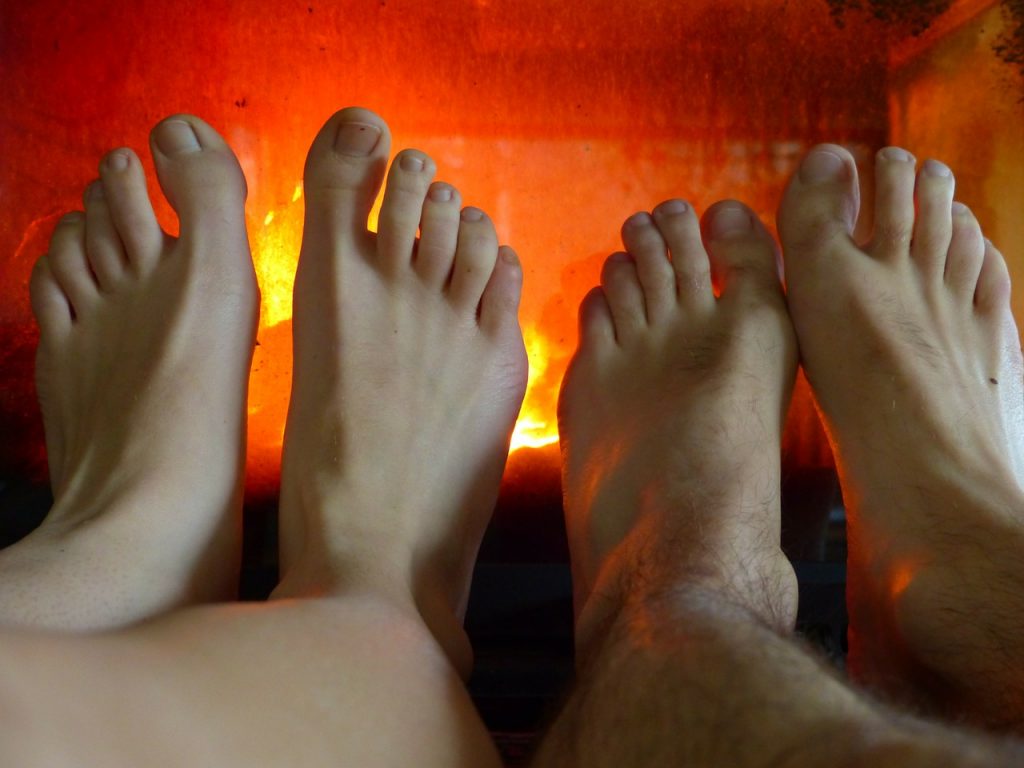Keeping Your Feet Warm In Winter

Your feet can take a pounding on the bike at the best of times, but Winter is even worse. All the spray and muck from the roads will hit them, and the bike’s forward motion and pedal rotation will add extra windchill. However, with a bit of thought and planning it’s quite easy to keep your feet warm no matter how extreme the weather.
Keep your body warm
When you get cold your body diverts blood flow from your extremities to your core in an effort to protect your major organs. This will draw blood away from your extremities and as blood is the heating fluid for the body any part that has restricted blood supply will feel cold. Making sure you have enough layers on to keep your body warm will prevent too much blood being diverted away from your extremities. This also applies to your head and ears, not just your torso.
Pre-warm your footwear
If you can start your ride with warm feet it will make getting going so much easier. While you’re getting the rest of your kit ready to ride or having breakfast (or whatever you do pre-ride), leaving your socks and shoes on a radiator while you get ready will pay dividends when you leave the house with warm feet. If you aren’t able to put them on a radiator then a quick pre-warm with a blast from a hairdryer will do the job just as well.
Layer up
If you have the room in your shoes, consider a second pair of socks. Some thin silk undersocks under a Merino wool main sock will provide an extra layer of heat-retaining air. It may not be much, but every little helps.
Use overshoes
To continue the ‘layering up’ theme an extra layer outside your shoe to keep out the elements will help massively. Cycling shoes tend to be well ventilated for obvious reasons. While this is good in the summer, all those holes get draughty in the winter. A set of good quality neoprene overshoes won’t cost the earth and there are generally three styles available. Toe covers for just the front of the foot that generally just keep a little wind out. Full shoe covers that cover the shoes and stop just below the ankle, or boot style that cover the shoe and up to the ankle, these are by far the most versatile of the covers and accordingly the most popular.
Keep them loose
As mentioned above, blood flow is important to keeping your feet warm. Consequently, it makes no sense to have your sock / shoe / overshoe combination so tight that they cut off the supply of blood. You don’t want them so loose that your feet slip out of the shoes or let water in. However, a little bit of ‘give’ will keep warm blood flowing around your feet. It will also allow for the inevitable expansion of your feet that will take place during a ride.
Eat and drink
Keeping properly fed and hydrated in the cold weather will help to keep the blood flowing properly. When it’s cold, there’s less of a tendency to want to drink, but getting de-hydrated can cause blood to thicken. This will lead to the inevitable circulation problems. Not fuelling properly will also cause the body to keep the blood in the core rather than pumping it out to the extremities.
Keep them dry
Keeping your feet dry will help to keep them warm as well. Your feet, more than any other part of your body are exposed to the wet and muck thrown up from the road in winter. Fit your bike with mudguards to keep your own spray down to a minimum. Also, if using overshoes make sure the top is tight enough to stop water from running into the shoe.
Move them around
Another simple one – moving your feet around while riding is a little more difficult that your hands, but keeping your feet moving will increase the flow of that lovely warm blood. Consider when freewheeling downhill taking a foot off the pedal and ‘rolling’ the ankle to stimulate the flow of blood.
Toe Warmers
Small chemical toe warmers are cheap and easy to obtain. If you have the room in your shoes they will sit under your toes and bring a modicum of relief. However, they only last a couple of hours so you may need spares if you’re on a long ride.
If you found this advice useful, please consider supporting us by buying a tea at www.buymeacoffee.com/cyclinglabs
Check out our companion article on keeping your hands warm here








